We hope that you are enjoying a happy and peaceful holiday season! And we can’t wait to see you next year!
by admin
We hope that you are enjoying a happy and peaceful holiday season! And we can’t wait to see you next year!
by admin
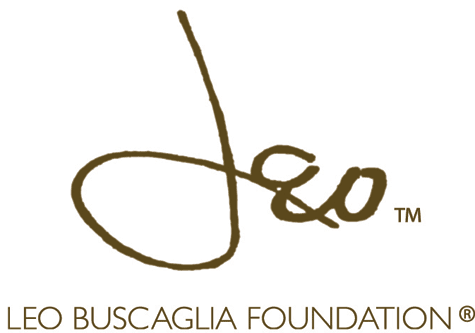 We are grateful for the support of the Leo Buscaglia Foundation whose mission is building community Spirit by helping people and others.
We are grateful for the support of the Leo Buscaglia Foundation whose mission is building community Spirit by helping people and others.
Leo Buscaglia was an inspirational educator, writer and lecturer who dedicated his work and life to love. He taught a non-credit course for many years at USC called Love 1A. The class inspired a book called Love and many more that became bestsellers.
Festival founder Heidi Durrow discovered his work as a struggling teen. “I was a mixed-race teen growing up poor,” Durrow said. “I felt not just lonely but somehow unloveable. Leo Buscaglia’s books and his speeches helped me through some difficult moments. I still have his books and read them when I’m feeling blue.”
We are excited to continue to grow the Mixed Remixed Festival with the help of the Leo Buscaglia Foundation!
by admin
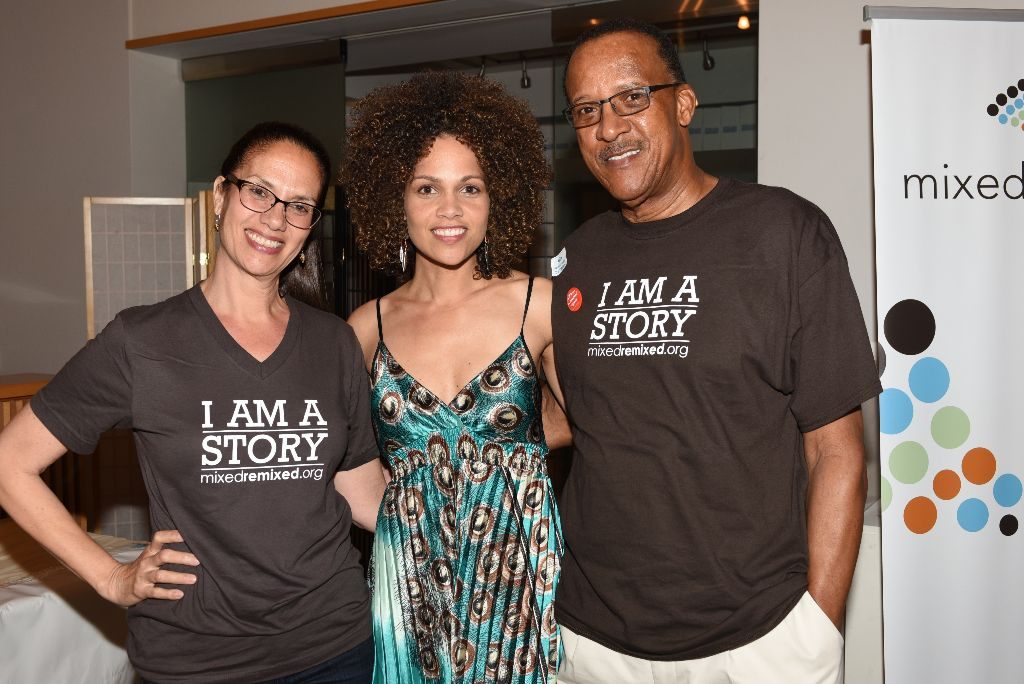 We are still buzzing from the great energy and love and enthusiasm from the festival last month. Are you too?
We are still buzzing from the great energy and love and enthusiasm from the festival last month. Are you too?
But we’ve also started to plan for the 2017 Mixed Remixed Festival which we think will be epic! It’s the 50th Anniversary of the Loving v. Virginia decision afterall!
 Immediately after the Festival we got some great news in the form of a grant from the California Arts Council. With support from the California Arts Council, Mixed Remixed will develop a comprehensive plan to engage the public and program quarterly events. We’ll outline a plan to extend the number of festival days and develop quarterly exhibitions and develop an engagement program with media & arts organization partnerships. We are extremely grateful for the support and look forward to bringing you more programming and more opportunities to connect!
Immediately after the Festival we got some great news in the form of a grant from the California Arts Council. With support from the California Arts Council, Mixed Remixed will develop a comprehensive plan to engage the public and program quarterly events. We’ll outline a plan to extend the number of festival days and develop quarterly exhibitions and develop an engagement program with media & arts organization partnerships. We are extremely grateful for the support and look forward to bringing you more programming and more opportunities to connect!
The question is what comes next? If you have ideas for us, please fill out our post-Festival three question survey and make sure your ideas are in the mix!
by admin
By Michele Beller
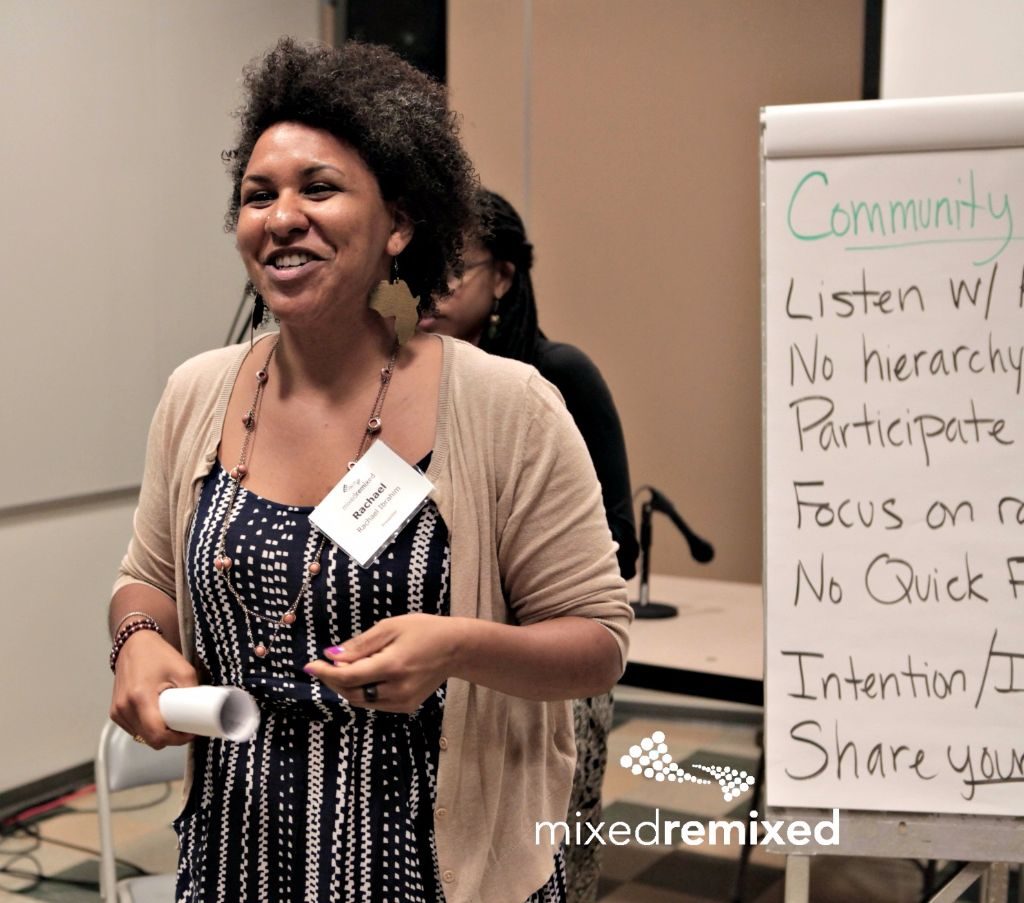 One of the most dynamic workshops of my day at the 2016 Mixed Remixed Festival this year was the Storytelling: Art and Activism Unite workshop with Amity Paye and Rachel Ibrahim, MSW. “Storytelling is a powerful, historical, cultural practice that has the ability to create social change,” they pointed out, and “as mixed race people, we have many stories to tell.” Amity, who works in communications at a labor union and has written extensively for various publications including The Nation, NBC, and The Root, and Rachel, a community organizer, trainer and artist, are a dynamic duo. Together they organize and facilitate conversations such as this across the U.S., through many venues.
One of the most dynamic workshops of my day at the 2016 Mixed Remixed Festival this year was the Storytelling: Art and Activism Unite workshop with Amity Paye and Rachel Ibrahim, MSW. “Storytelling is a powerful, historical, cultural practice that has the ability to create social change,” they pointed out, and “as mixed race people, we have many stories to tell.” Amity, who works in communications at a labor union and has written extensively for various publications including The Nation, NBC, and The Root, and Rachel, a community organizer, trainer and artist, are a dynamic duo. Together they organize and facilitate conversations such as this across the U.S., through many venues.
This day, we would be working not just on sharing our multiracial stories but on sharing them in a way that would build accountability, interrupt oppression, address anti-blackness, and, importantly, creating spaces for healing. In doing this, we would help lift up strategies to strengthen communities and promote social justice and racial equity, the pair explained. As they discussed the packed agenda for the next hour, attendees in the large group looked eager to get started.
The first order of business was a Community Agreement to help build a team/community, and after all agreed, the doors would be shut and we’d be ready to dig in. The contents of the Agreement are worth noting, and something good to remember for future.
First on the Agreement: “Listen with respect.” Here, Rachael paused to give us a fun puzzle to solve: “What else does listen spell when the letters are rearranged?” she asked. (I got this! I got this! NPR’s Puzzlemaster Will Shortz would be proud!) Answer: Silent! What a good reminder of how to listen—silence your inner dialogue as you listen to others.
Number two on the list was “No hierarchy of oppression” (whose oppression is worse that another’s? Answer: Not applicable—who is to judge?).
Third on the Agreement was “Participate” (move up or move back, depending on your habit of jumping in or sitting back.) Here, Rachael asked for a show of hands: first, those who are quick to jump in and comment or participate. Second, those who would prefer to sit back and observe rather than participate were asked to raise their hands. As the second group identified themselves, Rachael grinned and quipped, “Wonderful; we’ll call on you first.” The entire room broke out in laughter. She was kidding, of course, but you get an idea of what dynamic workshop leaders these two are and how skilled they are at putting everyone at ease.
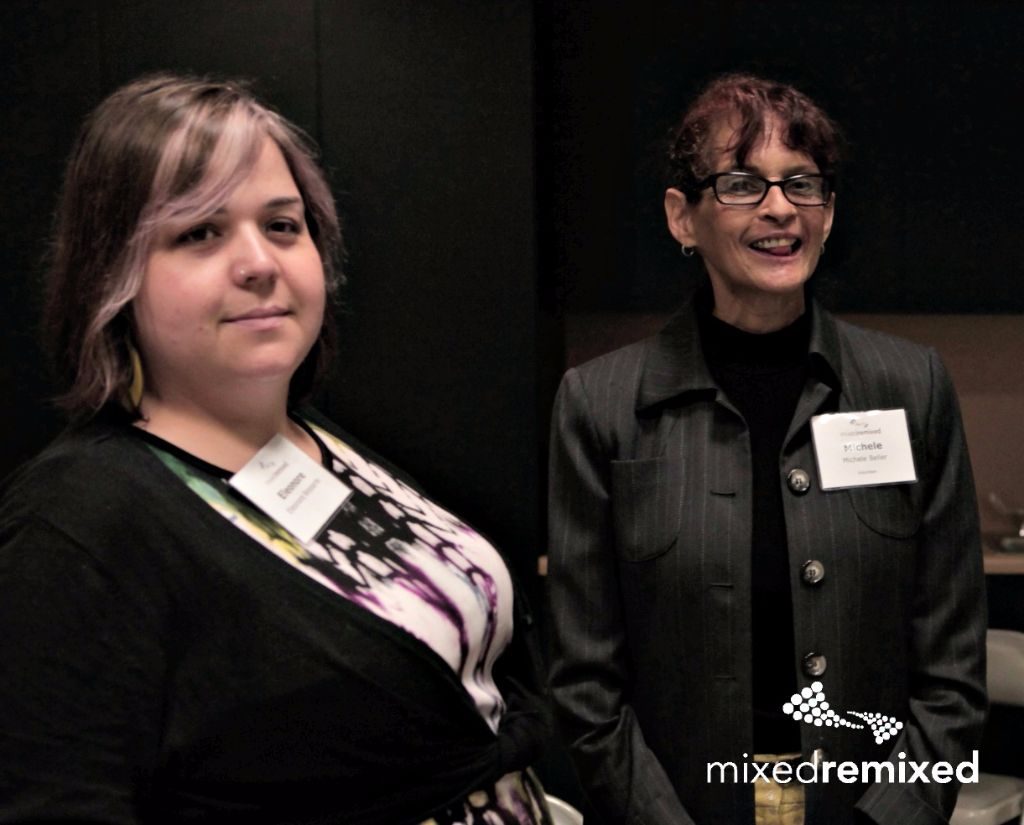 Next on the list was: “The focus today stays on racism in the U.S.–this mostly to narrow it down a bit accounting for the short time we had for the workshop. There are so many isms and so many issues, it can be overwhelming. And this point is a perfect segue way to the next item on the list: “Recognition that there is no ‘quick fix.’” (Whew! Pressure’s off! We wouldn’t have to solve all the country’s problems in this coming hour!).
Next on the list was: “The focus today stays on racism in the U.S.–this mostly to narrow it down a bit accounting for the short time we had for the workshop. There are so many isms and so many issues, it can be overwhelming. And this point is a perfect segue way to the next item on the list: “Recognition that there is no ‘quick fix.’” (Whew! Pressure’s off! We wouldn’t have to solve all the country’s problems in this coming hour!).
Another important item was “Intention/Impact.” Here, the idea is that we all agree we are gathered for the workshop with good intentions, to not cause harm or say something offensive to someone else, and yet sometimes we do that anyway. Lastly, we agreed to keep this workshop for sharing our story and not someone else’s.
Once we all agreed, the door was closed and attendees pulled their chairs in closer, ready to roll up their sleeves. It was at this moment that one witty person remarked, “Oh, so this won’t be a craft workshop?” Again, laughter ensued and it was clear that the group was highly engaged and excited to start.
After breaking into a rotation of small groups and meeting/greeting each other with brief introductions for about five minutes, we gathered back together as a whole group and introduced ourselves to the group, with a few of us sharing more about our stories—who we were. One of the things that struck me and made me tingle with joy is how wonderfully beautiful, fascinating, and diverse “mixed race” can be— multiracial, hapa, biracial, blasian, mixed race adoption, and so much more! And these labels can’t come close to revealing each unique story. What a handsome group of people, I thought at that moment. I’m so glad I’m here.
Rachael discussed the multiple ways we can tell our stories: written, oral tradition, music, and art, for example. One of her comments really struck me: “We use storytelling as a way of finding, ‘Who are my people?’” she said. I know that feeling all too well! We all were nodding our heads in recognition as she told her own unique story of who she was and of trying to figure out who her people were.
Our next activity sounds fun even just by its name: Mingle Huddle! Here, we once again broke into smaller groups, in two alternating parts; first, we were instructed to mingle around the room like we were at a cocktail party. To facilitate the “mingle” mood, the pair played upbeat music, and the room literally buzzed. In the middle of our mingling, they would call out, “Five!” at which we then went into “huddle” mode, where we huddled in groups of five for structured storytelling based on a prompt.
Amity and Rachael gave us a total of four prompts to work from, each one timed (three minutes!), and they were delicious prompts: First: Where is home/Who are your people/Where are your people from? You can just imagine the fascinating stories that came out of that prompt!
The second prompt was: What is an aspect of your culture that is sustaining to you? (For me, the tradition of the Caribbean rice and peas dish and fried plantains every Christmas, imported from my West Indian grandfather’s family—mandatory!). The third prompt was: What are ways you have addresses/interacted with racism in your life? How are these different/unique because of your mixed heritage? (You can just imagine the stories that came out of that one!) Our final prompt was perfect for coming to a close: How can our stories unlock opportunities for healing and change?
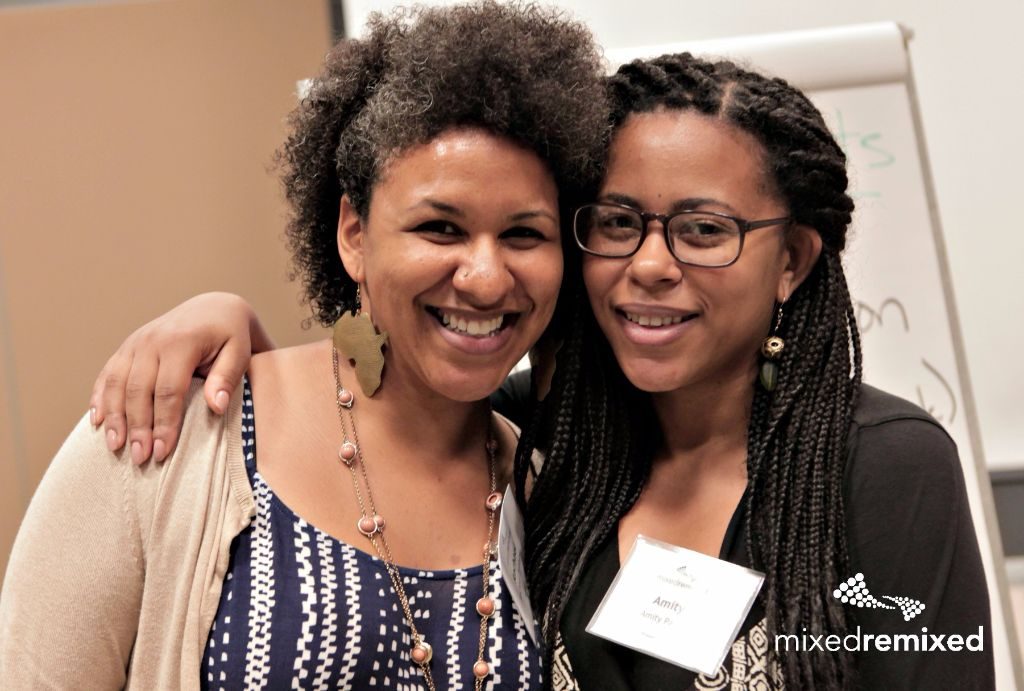 We wound down the workshop with the sharing of our findings and insights from the mingle huddle activity. Rachael noted that being able to share stories is important first because of its ability to build the sense of community from which we can work, and is actually a form of activism itself: the act of holding space for people and allowing for the complexity of their stories without having to interject or tell them how their story is similar/dissimilar to ours.
We wound down the workshop with the sharing of our findings and insights from the mingle huddle activity. Rachael noted that being able to share stories is important first because of its ability to build the sense of community from which we can work, and is actually a form of activism itself: the act of holding space for people and allowing for the complexity of their stories without having to interject or tell them how their story is similar/dissimilar to ours.
We can’t organize against racism, Rachael pointed out, if we are not in relationship to each other, which is why knowing how to listen and create safe spaces for each other is crucial. We closed on a reflection of how our stories shared today can affect communities and offer opportunities of healing. By the time the group was filing out of the room, budding friendships had been forged and a strong sense of community hung thick in the air. It never fails, Amity said, that through creating this space and sharing stories, people connect in amazing ways, sort of that “Oh my god—I can’t believe I found you!” moment. And I concur—I can’t believe I found this workshop.
Note: If you’d love to learn more about their amazing work, while Amity and Rachael do not presently have websites, any requests for consultation or training can be sent to Rachael at assist.rachaelibrahim@gmail.com
~Michele Beller, Festival Blogger, https://randomaunt.wordpress.com/
by admin
By Michele Beller
“Everybody has a story,” began Zachary Green, a professor of Leadership Practice at the University of Maryland and one of the workshop leaders for the first workshop of my day. “But sometimes, that story never gets heard,” Dr. Green continued. This intro was to be the beginning of a rich and delicious day packed with workshops and panels and community and conversation in my day of Mixed Remixed Festival 2016 bliss.
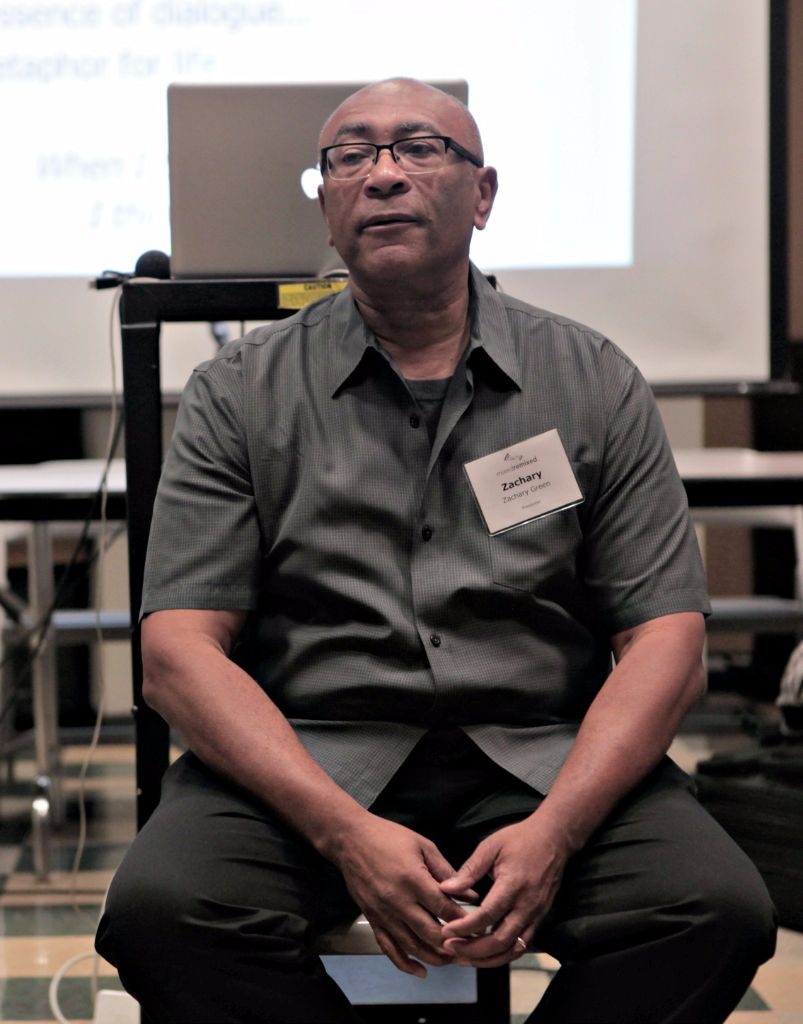 As Zachary explained what we were about to embark upon, the room continued to fill with more and more beautiful multiracial faces, all ages and all shades of the mixed race rainbow; the influx didn’t stop until people were sitting, standing, propped against the back wall, filling every available space of the room. This is going to be a popular workshop, I thought to myself. The energy was palpable. I leaned forward in anticipation. “The purpose of this workshop is twofold,” Zachary continued. “One of it is to introduce you to a form of dialogue called the Dialogue Circle; the second part is jazz improvisation.” I didn’t know exactly where we would be going in the next hour or so, but I knew it would be good.
As Zachary explained what we were about to embark upon, the room continued to fill with more and more beautiful multiracial faces, all ages and all shades of the mixed race rainbow; the influx didn’t stop until people were sitting, standing, propped against the back wall, filling every available space of the room. This is going to be a popular workshop, I thought to myself. The energy was palpable. I leaned forward in anticipation. “The purpose of this workshop is twofold,” Zachary continued. “One of it is to introduce you to a form of dialogue called the Dialogue Circle; the second part is jazz improvisation.” I didn’t know exactly where we would be going in the next hour or so, but I knew it would be good.
“The quintessence of this workshop is that it will be experiential,” said Angelo Lewis, our second of three workshop leaders. He made it clear that they as workshop leaders were not here to tell us what to do or what to think. “We will invite you to tell your story,” he finished. Angelo, author, life coach, and co-founder of the Diversity and Spirituality Network, is also the creator of the Dialogue Circle technique. (More on Angelo Lewis here http://www.angelojohnlewis.com/about/ and Dialogue Circle uses here: http://www.dialogue-circles.com/.)
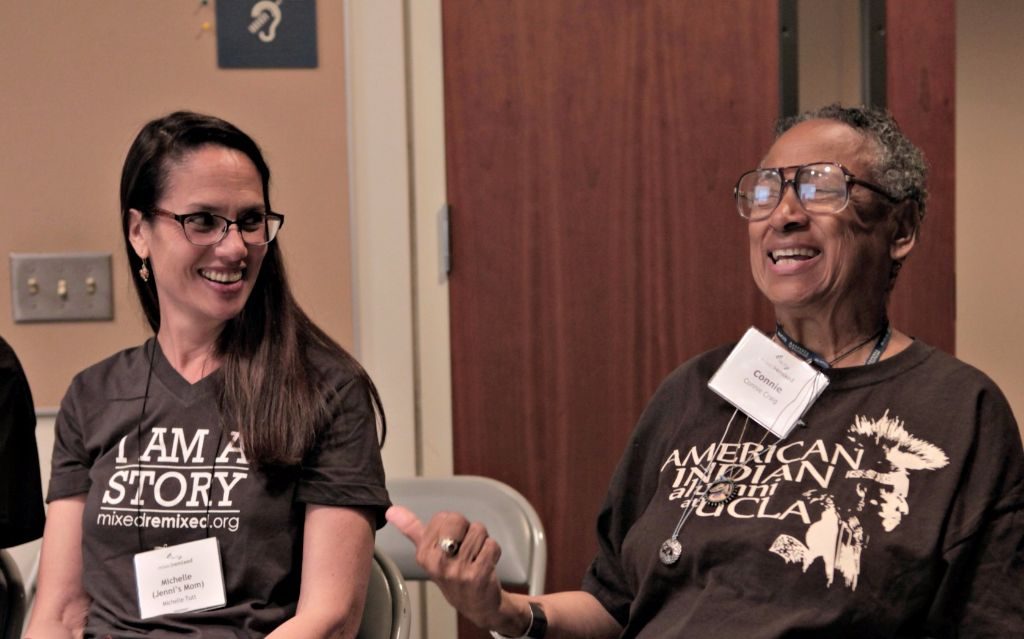 In describing the value of the Dialogue Circle, Angelo explained a scenario to which many of us could relate: a group of people come to a meeting—maybe two different departments; everyone has their own agenda. In the course of the meeting, they hash it out; often in this scenario, somebody wins and somebody loses. Dialogue is a method for short circuiting that process. The idea of Dialogue Circles is that exchanging stories builds common ground—and everybody wins.
In describing the value of the Dialogue Circle, Angelo explained a scenario to which many of us could relate: a group of people come to a meeting—maybe two different departments; everyone has their own agenda. In the course of the meeting, they hash it out; often in this scenario, somebody wins and somebody loses. Dialogue is a method for short circuiting that process. The idea of Dialogue Circles is that exchanging stories builds common ground—and everybody wins.
Cindy Franklin, the third member of our workshop team, is an executive coach and co-founder of the Diversity and Spirituality Network; she then discussed the idea that we all have identities—often more than one, and some of them hidden. Many heads were nodding in agreement as she spoke. By sharing parts of ourselves together, she said, we can learn what others expect from us based on what they see or understand, and honor our humanity as a group.
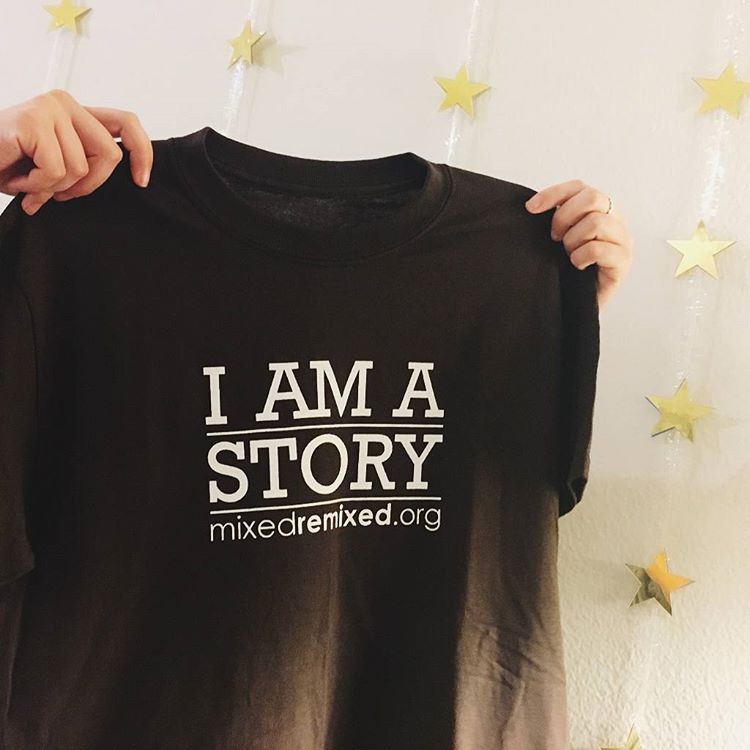
After the introductions by our fearless leaders, we were then encouraged to go around the room and introduce ourselves with the following opener: “When I think of my identity, I think of myself as….” What followed became a rich tapestry of multiracial voices and experiences; I felt privileged to bear witness. The voices that emerged weaved an embroidery of uniqueness and yet felt familiar at the same time. As people shared their stories, I felt warmly embraced by the inclusion of every combination of race, culture and ethnicity you could think of—plus a few you hadn’t. It was a reminder that the idea of “mixed race” or “multiracial” is not just one thing or idea or experience. I never felt more proud to be part of this community called mixed race. One participant summed it up brilliantly when she began her intro, “I feel lucky to be Mixed.” Amen, hooray, and brava!
One nice detail of the workshop was the reminder to breathe, to slow down, and to listen, as we shared in turn and as we considered each other’s’ stories. As a reminder and point of focus, periodically Zachary asked us to spend a moment being silent and focusing on our breath; he rang a Tibetan singing bowl, the pure and lyrical sounds of which had a calming and even meditative effect on the group.
As we delved deeper into the Dialogue Circle process and prepared to reveal even more of ourselves in the process of our dialogues, Zachary directed us to a flip chart with Dialogue Guidelines for us to follow: Speak from experience; Suspend assumptions; Listen as colleagues; Defer clarification; and Focus on learning.
Our last discussion question was a great one: describe a time, Angelo prompted, when you experienced a conflict between your public identity and your less visible hidden identity (or identities). The stories that were shared as we went around the room answering this query were sometimes deeply personal, often very poignant, and at times just plain funny; the sense of community in the group became even stronger.
To wind the workshop down, the group was asked to take another breath (enter Tibetan singing bowl) and consider the sharing that just took place, then call out one or two words that came to us; many words were offered, such as community; validation; belonging; and more. Finally, by way of closing, Zachary asked us to again call out and answer the ultimate question: “What are you going to do with this experience as you continue on from here?”
~Michele Beller, Festival Blogger, https://randomaunt.wordpress.com/
by admin
A Festival For Mixed-Race Storytellers — And Everyone Else, Too https://t.co/M4yS3Id8Y7 by @AskLeezulpic.twitter.com/XQo03rYMRQ
— NPR’s Code Switch (@NPRCodeSwitch) June 20, 2016
We were super excited to see this story run on NPR’s Code Switch. The reporter, Leah Donnella , really asked great questions and we hope moved the needle on this conversation about mixed-ness! Check it out! –Heidi Durrow, Festival Founder
by admin
We asked Christina Guillen who led the Microaggression Zine Workshop at the Mixed Remixed Festival about her experience. The workshop was a hands-down hit. We are looking at the possibility of doing this workshop again during the year so that more of our Festival followers can experience this. Plus I want to do the workshop too!-Heidi Durrow, Festival Founder
“Festival attendees filled the room. I introduced my background as Mexican and white and gave a definition of microaggression. I explained my story of first encountering the term. I shared my anger and the diffusion of pain upon hearing the word. I proposed to our group we give our microaggressions a shape, smell, or feeling. I demonstrated releasing a rough styrofoam ball on the table. The ball bounced and rolled away. I explained once we can see our microaggression outside of ourselves we can disidentify and observe it. This gives our power back.
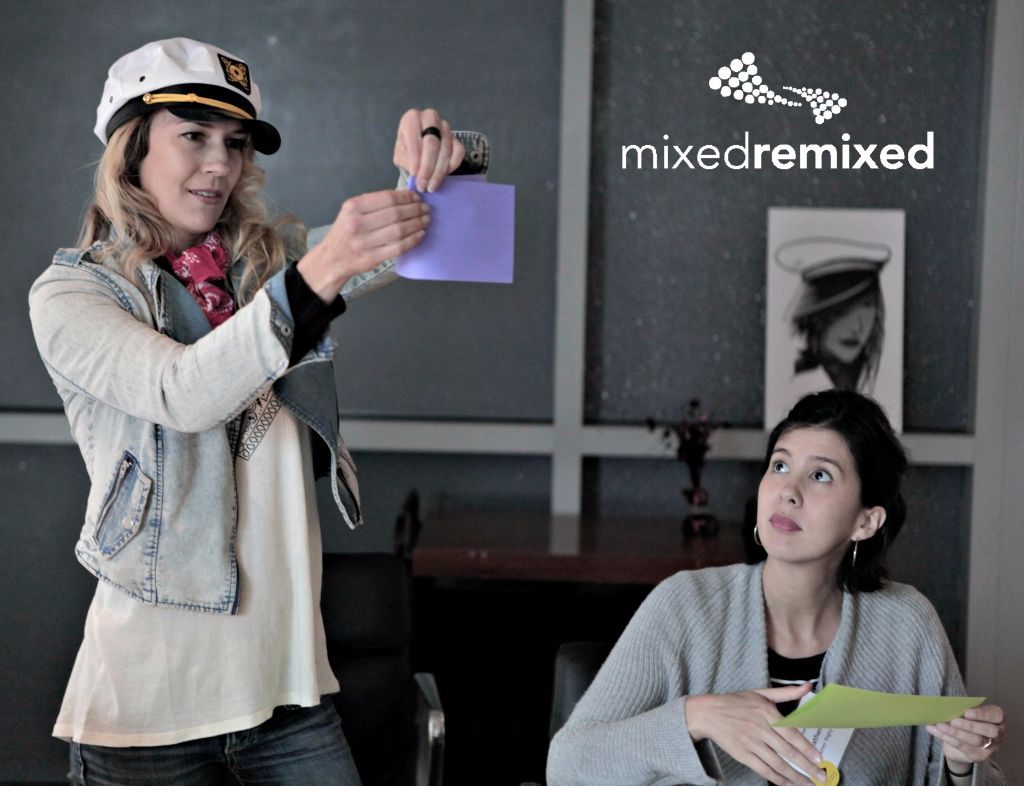 I asked them to offer their own microaggressions. They spoke up shyly at first, but eventually there were enough responses to see an array of reactions. Some spoke with humor others let their anger and frustration be heard. It got pretty intense but I was prepared. I let them know it was a safe place, we’re in the same boat. We have a right to feel however we feel. I think the validating was really needed. Even though I’d said I was not the microaggression expert but more of a conversation facilitator, people still looked to me for validation of their feelings, to ask whether their experience was a valid microaggression. Some got tangled up with terms so we talked about what underlies the term microaggression. Our honest feelings underneath it all are telling us something doesn’t feel right. We want to name it because we want to disidentify from it. We went back to the beginning—give the feeling a shape and disidentify.
I asked them to offer their own microaggressions. They spoke up shyly at first, but eventually there were enough responses to see an array of reactions. Some spoke with humor others let their anger and frustration be heard. It got pretty intense but I was prepared. I let them know it was a safe place, we’re in the same boat. We have a right to feel however we feel. I think the validating was really needed. Even though I’d said I was not the microaggression expert but more of a conversation facilitator, people still looked to me for validation of their feelings, to ask whether their experience was a valid microaggression. Some got tangled up with terms so we talked about what underlies the term microaggression. Our honest feelings underneath it all are telling us something doesn’t feel right. We want to name it because we want to disidentify from it. We went back to the beginning—give the feeling a shape and disidentify.
I passed around a bucket of shapes (screws, sandpaper, scissors, a zipper, a crab’s pinchers, a snarling chihuahua, etc). Each person kept one to represent their feeling as they filled out a worksheet about microaggressions. Later, I showed how to fold a single sheet into a small book. Afterward, the group transferred their ideas from the worksheet onto the zine book. They created with markers, stencils, and drawings. The result was a zine that physically showed their experience outside of themselves. Titles ranged from “You don’t like beans?” to “Don’t touch my hair!” to “Zen in the face of microaggression.”
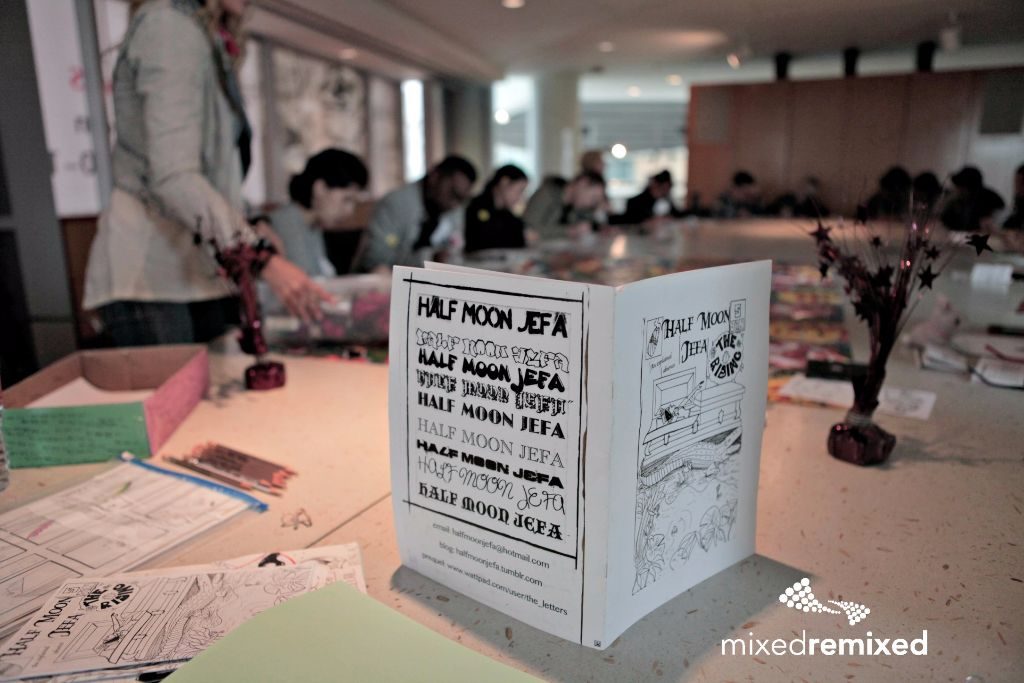 The actual creative process allowed us to keep the conversation going while our hands were occupied. We talked about that many minorities transcend their experiences by doing creative projects. Myself and another woman wrote a novel, another sings, and all of us made a zine. We talked about seeing the positive angle of microaggressions, we found ways it was making all of us better more loving people.
The actual creative process allowed us to keep the conversation going while our hands were occupied. We talked about that many minorities transcend their experiences by doing creative projects. Myself and another woman wrote a novel, another sings, and all of us made a zine. We talked about seeing the positive angle of microaggressions, we found ways it was making all of us better more loving people.
At the end I suggested leaving their zine in their car as a communication tool. Several said they’d like to do so. I was overjoyed with the smiles, hugs, gratitude, and relief I felt in the room. It was an amazing feeling to validate and empower so many people! I think I’m still glowing.”-Christina Guillen
Christina Guillén is a diversity speaker, teacher, writer and the creator of Half Moon Jefa, the Mixed People’s Superhero. Her historical fiction novel and M.F.A. in Creative Writing focus on identity, feminism, and indigineity vs. colonialism. Christina will lead an exciting hands-on zine workshop to flirt with our perspectives on the topic of microaggressions. Find out what trucos she’s up to at halfmoonjefa.tumblr.com.
by admin
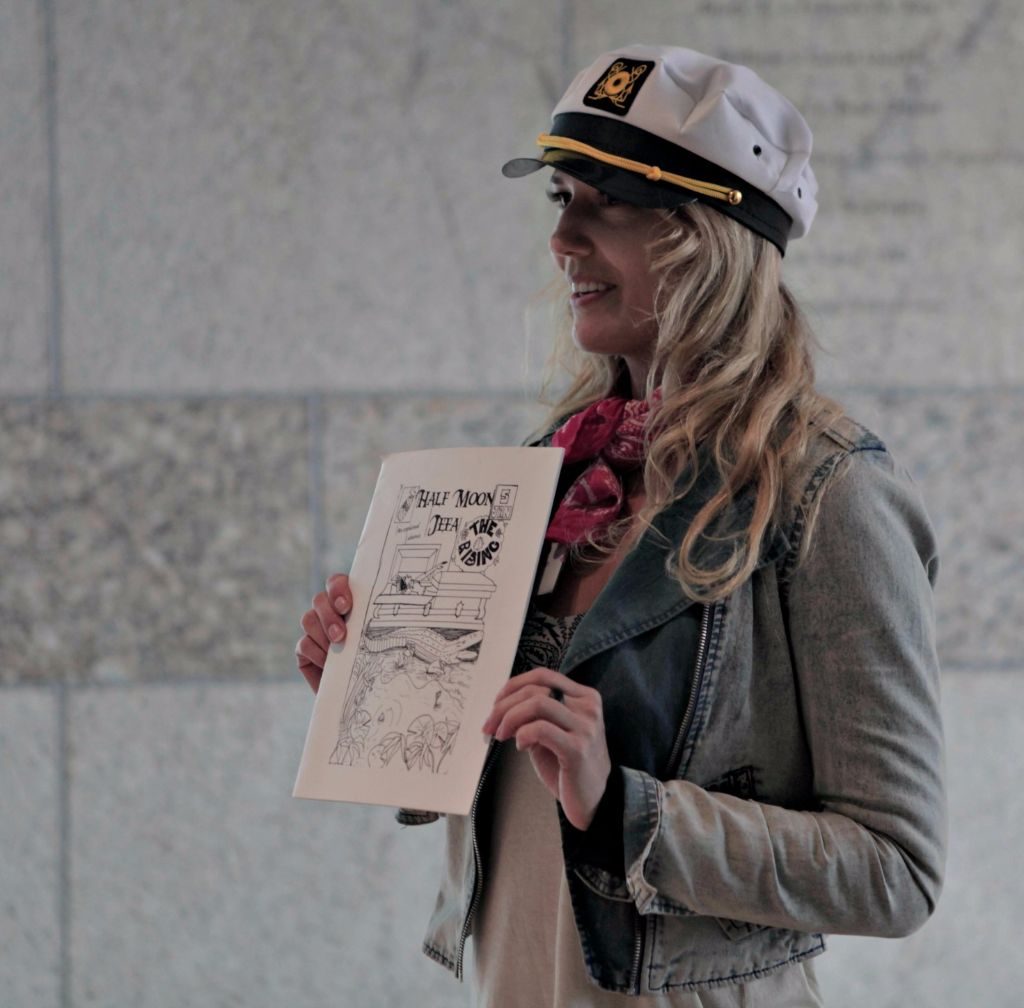 When I walked into the Yuki Family Board Room of the Japanese American National Museum at the 2016 Mixed Remixed Festival where the Microaggression Zine Workshop was being held, I’ll admit that I wasn’t entirely sure what to expect.
When I walked into the Yuki Family Board Room of the Japanese American National Museum at the 2016 Mixed Remixed Festival where the Microaggression Zine Workshop was being held, I’ll admit that I wasn’t entirely sure what to expect.
The description in the Mixed Remixed Festival Program sounded inviting: “Naming and understanding the little monsters [microaggressions] can bring back an immense sense of personal peace and power.” I was intrigued. Personal peace and power? Sign me up. The workshop was led by Christina Guillén, a diversity speaker, teacher, and writer. You can see a picture of the poster she created for our workshop and learn more about her at . This will give you a hint of the fun she had in store for us workshop attendees. (Christina is also writing a fascinating historical fiction novel set in sixteenth century Mexico, focused on identity and indigeneity vs. colonialism—you can follow along with her prequel, a series of online letters written back and forth by the novel’s characters at https://www.wattpad.com/user/The_Letters.)
Are you wondering what a microaggression is, exactly? A lot of us were. This was the first thing Christina addressed when the workshop began. She offered a definition and then went around the room and asked each of us to add to 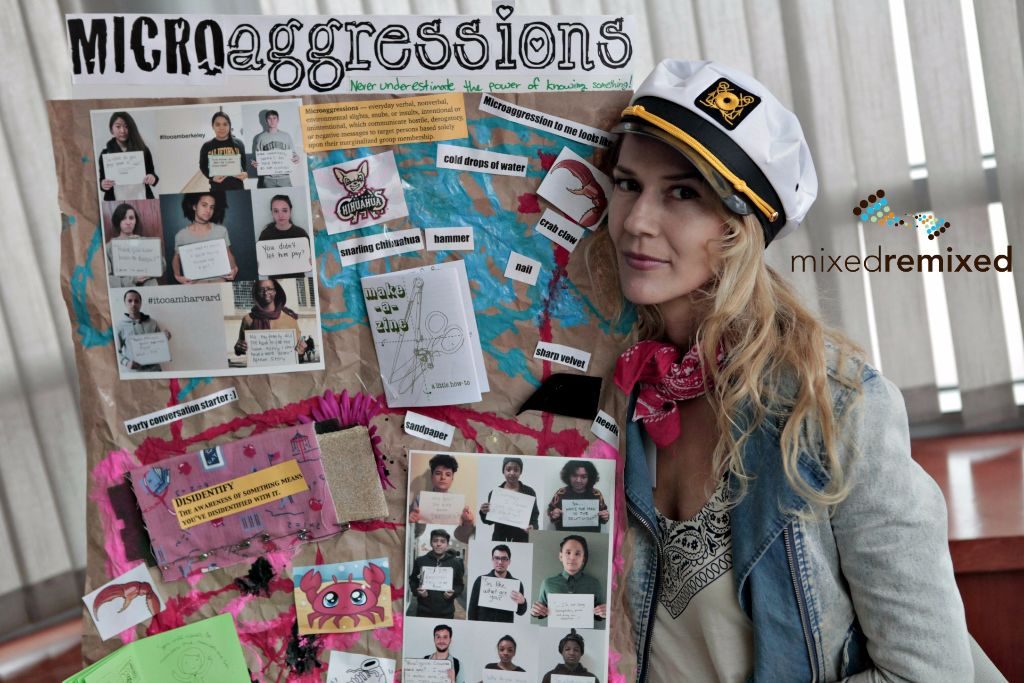 the conversation by offering our understanding. The room was buzzing with talk and discussion; Christina is a delightful workshop leader and made all of us feel warmly accepted and eager to learn more. The term “microaggression” has been around for a while; Random House dictionary describes it this way: “a subtle but offensive comment or action directed at a minority or other nondominant group that is often unintentional or unconsciously reinforces a stereotype: microaggressions such as ‘I don’t see you as black.’” For mixed race people like me, a familiar one is that pesky question, “What are you?” or “Where are you from—no, originally, where are you from?” All of the workshoppers were excited at the notion that we could use these zines to, as Christina suggested, “flirt with our perspectives on the topic of microaggressions.”
the conversation by offering our understanding. The room was buzzing with talk and discussion; Christina is a delightful workshop leader and made all of us feel warmly accepted and eager to learn more. The term “microaggression” has been around for a while; Random House dictionary describes it this way: “a subtle but offensive comment or action directed at a minority or other nondominant group that is often unintentional or unconsciously reinforces a stereotype: microaggressions such as ‘I don’t see you as black.’” For mixed race people like me, a familiar one is that pesky question, “What are you?” or “Where are you from—no, originally, where are you from?” All of the workshoppers were excited at the notion that we could use these zines to, as Christina suggested, “flirt with our perspectives on the topic of microaggressions.”
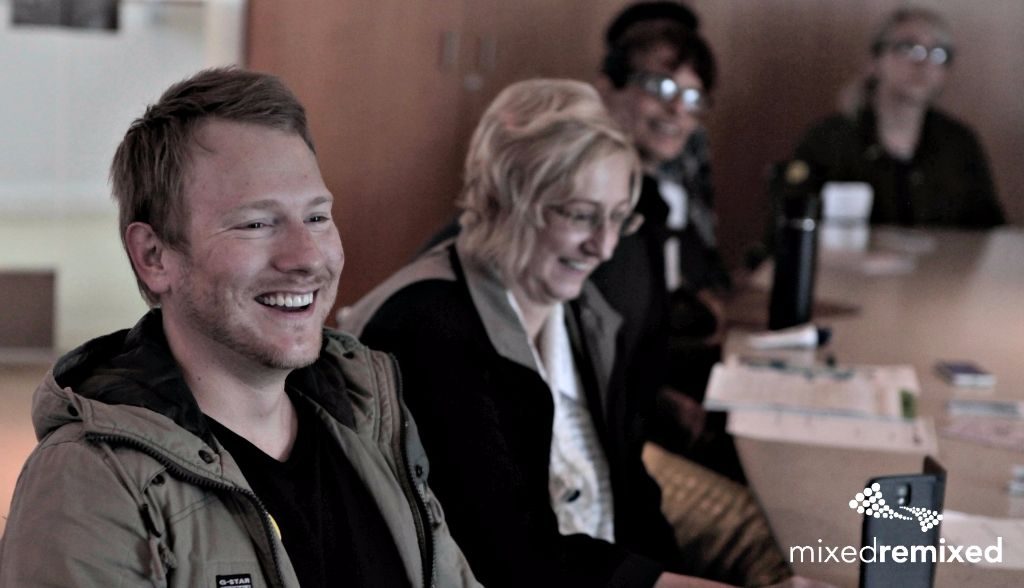 Another great conversation the group had was the sharing of how we each tend to react or handle microaggressions when we are on the receiving end. As we went around the room, the reactions people described ran the gamut, from angry to confused to embarrassed to shamed. One workshopper had a great approach: humor. He explained that his approach was to play right along with the offender, replying and continuing the conversation in a manner that increasingly showed the absurdity of the comment or act, until the person realized his/her folly and the tables had turned. Note to self, I jotted on my notepad. Must try.
Another great conversation the group had was the sharing of how we each tend to react or handle microaggressions when we are on the receiving end. As we went around the room, the reactions people described ran the gamut, from angry to confused to embarrassed to shamed. One workshopper had a great approach: humor. He explained that his approach was to play right along with the offender, replying and continuing the conversation in a manner that increasingly showed the absurdity of the comment or act, until the person realized his/her folly and the tables had turned. Note to self, I jotted on my notepad. Must try.
Once the group felt clearer about microaggressions, we were ready to dig in to the zines. At the beginning of the workshop, Christina had given each of us some samples of zines she had created—they are, simply, handmade mini-magazines. She handed out outlines with prompts that we would answer out as we fleshed our zines. Then she passed around a plastic container full of odd and eccentric items that we could go through and pick out, with the idea that this was added inspiration, visual, tactile, and most definitely creative! Some of the items included, for example, sandpaper, big floppy silk flowers, a rock, a small ceramic mask, and a little hammer. I chose the little hammer—don’t ask!
Once we got to work, Christina turned on some background music to help feed our creativity, wonderful Afro-Latin jazz type music that had me groovin’ and the whole room buzzing. Christina had promised we would “light up with creative excitement” as we processed confusing experiences that made us feel funny or awkward, and I’ll confirm: that boardroom was ablaze with energy! As we worked, a great scene of laughter, sharing, and sheer genius ensued. Once we had our outlines done and our tools laid out in front of us, Christina taught us how to take a plain 8 ½ by 11 sheet of paper and fold it until it turned into a mini book, sort of origami-style. We were rolling now! Meanwhile, Christina had spread a mini-toy-store of creative grown-ups’ utensils across the table —colored pens and pencils, crazy, fun stencils (like bats and ghosts) and more (I chose a dinosaur for my stencil).
Growing up biracial with two parents who firmly believed and taught me that “race” is a social construct, I had no idea when I got older and went out in the world how to manage the microaggressions that were directed at me. Christina offered a wonderful, empoweri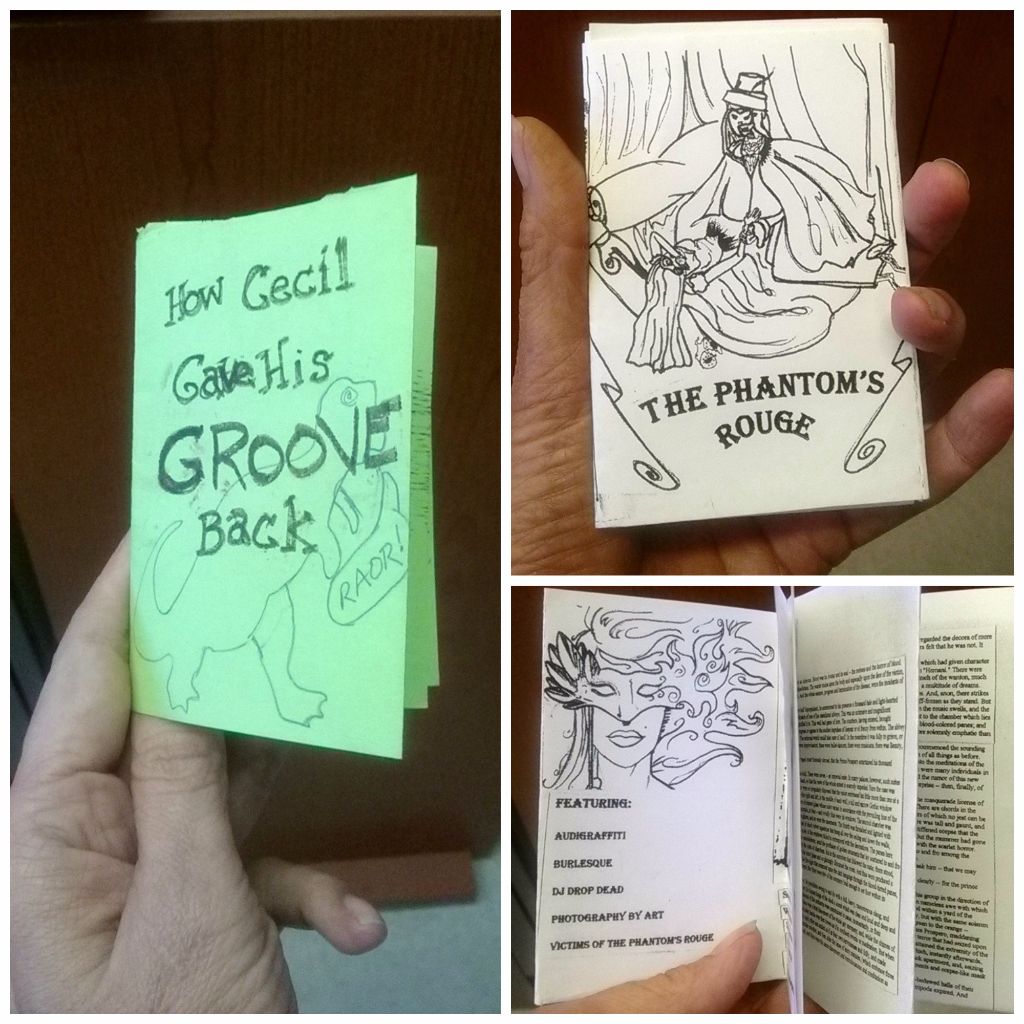 ng, therapeutic strategy for managing these inevitabilities of multiracial life. As our time together neared its end, the group, now feeling extremely comfortable and collegial, went around and shared what they had created. No one wanted to leave. Christina had promised us that we would “leave with a new positive experience to associate with microaggressions, and a hands-on tool to help us better understand how conscious and unconscious behaviors like microaggressions affect us Earthlings.” She didn’t disappoint.-Michele Beller, Festival Blogger
ng, therapeutic strategy for managing these inevitabilities of multiracial life. As our time together neared its end, the group, now feeling extremely comfortable and collegial, went around and shared what they had created. No one wanted to leave. Christina had promised us that we would “leave with a new positive experience to associate with microaggressions, and a hands-on tool to help us better understand how conscious and unconscious behaviors like microaggressions affect us Earthlings.” She didn’t disappoint.-Michele Beller, Festival Blogger
This is one story in a series about the programs held at the Mixed Remixed Festival 2016. Please read through them all by searching our blog with “2016 Festival Re-Cap.”
The I Have a Story in Me workshop at the 2016 Mixed Remixed Festival was about using writing as a tool for self-exploration and the building of interpersonal bonds within a community. The workshop was facilitated by author and life coach Angelo Lewis, and Zachary Green, professor in Leadership Studies at the University of Maryland. Educator S.Y. Bowland was unable to attend in person, but did join via video link.
The workshop opened with a community building exercise that began with everyone introducing themselves to the group, then agreeing to a set of rules about listening to, and interacting with one another. These rules, to which we were each explicitly asked to consent, formed the foundational cultural norms for the newly formed “community” within the room.
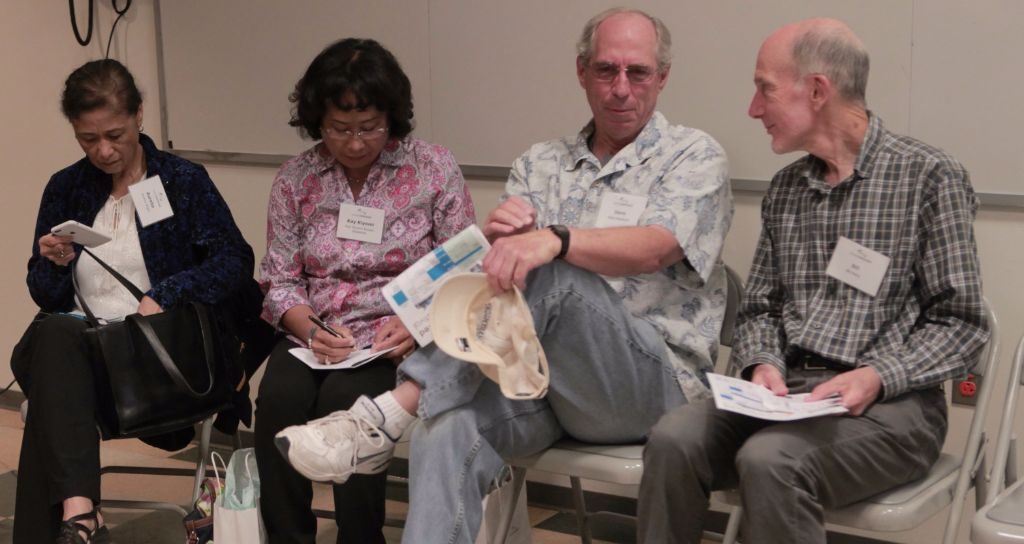 Next was a free-writing exercise, the prime directive being “write, don’t think.” The assignment was to write about something we’ve read that significantly impacted us.
Next was a free-writing exercise, the prime directive being “write, don’t think.” The assignment was to write about something we’ve read that significantly impacted us.
(I wrote about an an essay by Gerald Vizenor from I Tell You Now, Autobiographical Essays by Native American Writers. This was in the year 2000, long before expressions like “hapa” or concepts like being mixed race had bubbled up into our consciousness. Describing his mixed background, Vizenor refers to himself as “mixedblood.” That was the first time in my life I had found language to describe myself, which, in turn, inspired my first autobiographical essay “Running with the Mixed Bloods.”)
which, in turn, inspired my first autobiographical essay “Running with the Mixed Bloods.”)
The final exercise was an interesting role-playing exercise about dominant versus subservient positions and how social hierarchy influences the ways in which we listen and interpret.
We were divided into groups of three, and in each group we had a dominant player, a subservient player, and a reporter. The subservient players were asked to have a conversation with the dominant player about some topic of concern. In my group, I was the dominant player and the topic of concern was the fact that senior staff members tended to be late to their own meetings, if they showed up at all. And when they did show up they often were on their phone doing something “important.”
This was rude, a waste of people’s time, disrespectful and very, very frustrating to the entire staff.
I repeated what I heard to our reporter, and the results were very similar to that of other groups. The facts I got right, but my version of the conversation completely stripped it of its emotional content. I understood the issue at hand but did not account for the level of urgency and frustration expressed by the subservient player.
 Writing, explained Ms. Bowland, allows us to “suspend the rules” and “figure out a way to question dominance and … respond in a way that is safe.”
Writing, explained Ms. Bowland, allows us to “suspend the rules” and “figure out a way to question dominance and … respond in a way that is safe.”
Ms. Bowland reminded us that we all have a stories to tell and that “the important point is to make sure that the narrative we have is heard.” She closed the workshop by tying the act of writing to the concept of community: “When we write in a community and we can speak and listen to each other, writing becomes a revolution. And that’s where we get the momentum that keeps us moving.”-Michael Maliner, Festival Blogger Twitter @plasticspoon
This is one story in a series about the programs held at the Mixed Remixed Festival 2016. Please read through them all by searching our blog with “2016 Festival Re-Cap.”
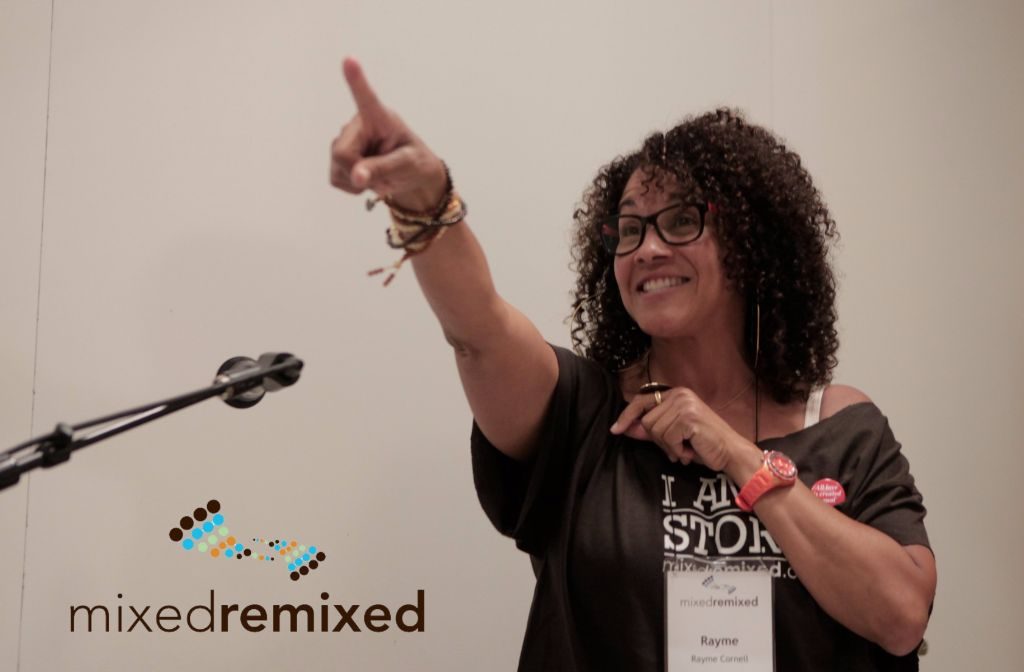 In response to being asked about the right time to discuss race with a child, Claude Knobler, author of the parenting memoir “More Love, Less Panic: 7 Lessons I learned about Life, Love, and parenting after we Adopted our Son from Ethiopia” told the following story:
In response to being asked about the right time to discuss race with a child, Claude Knobler, author of the parenting memoir “More Love, Less Panic: 7 Lessons I learned about Life, Love, and parenting after we Adopted our Son from Ethiopia” told the following story:
About a month after I brought Nati home from Ethiopia, I went to the grocery store with my very blue-eyed daughter, and my blond son, and Nati. And the man putting the stuff in the bags said, “Is that your family?” And I said, “Yes.” And he said, “Are those you children?” “Yes.” And he said, “One of them is black.” I said “Which one?”
Race is all around us, which is why raising kids in a mixed race family presents unique challenges, as well as unique rewards.
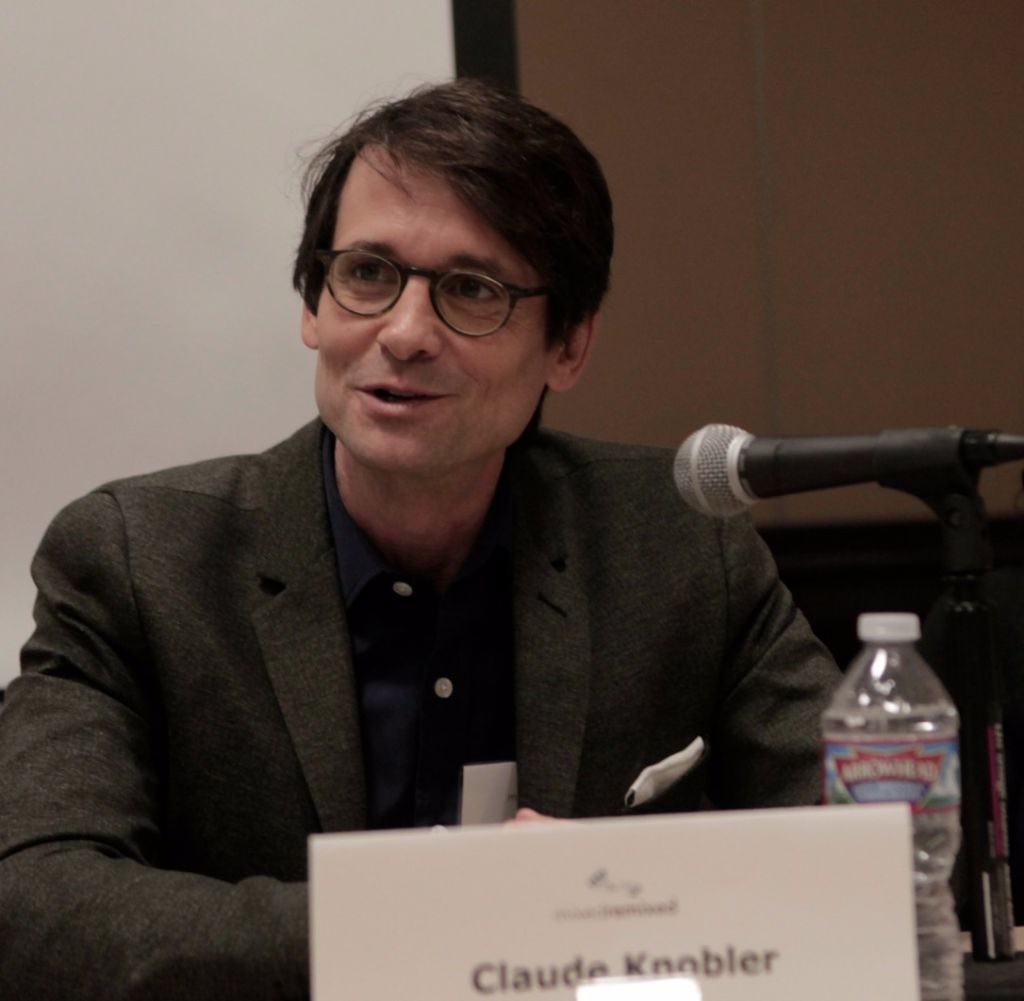 Mr. Knobler was among the panelists on the Parenting with Difference panel at the 2016 Mixed Remixed Festival, which was rounded out by Claudine Cooper, Elizabeth Enslin, Crystal Ksenjak, Lise Ragbir, Angie Sanders and Regina Wellman, and moderated by Rayme Cornell – an esteemed group of writers, bloggers, artists and advocates, each with a unique take on what it means to be a parent in a multiracial family.
Mr. Knobler was among the panelists on the Parenting with Difference panel at the 2016 Mixed Remixed Festival, which was rounded out by Claudine Cooper, Elizabeth Enslin, Crystal Ksenjak, Lise Ragbir, Angie Sanders and Regina Wellman, and moderated by Rayme Cornell – an esteemed group of writers, bloggers, artists and advocates, each with a unique take on what it means to be a parent in a multiracial family.
The panel addressed the a broad spectrum of multiracial family situations, from overseas and transracial adoption to biological children of mixed race couples. Naturally, the question of when and how to discuss race with children was a recurring theme.
Ms. Wellman is the founder of BiracialBoom.com, a website dedicated to parents raising biracial children. She founded the site after raising her biracial children so that others might benefit from her “20/20 hindsight.” Her advice was to introduce race via children’s picture books, which today cover families of all shapes, sizes, hues and genders. Angie Sanders, adoption advocate and founder of an Adoptive Parents Support Group, also felt that this was important for a preschooler. School is a turning point with respect to having control over that to which kids are exposed. Picture books are a great way of taking control of the subject matter before kids enter a classroom setting.
This racial consciousness is not limited to skin color. Writer and curator Lise Ragbir shared that at this point in her life, Ms. Ragbir’s daughter is more conscious of hair than of skin color – likely due, in no small, to the portrayal of young women and their hair in the Disney movie “Frozen.”
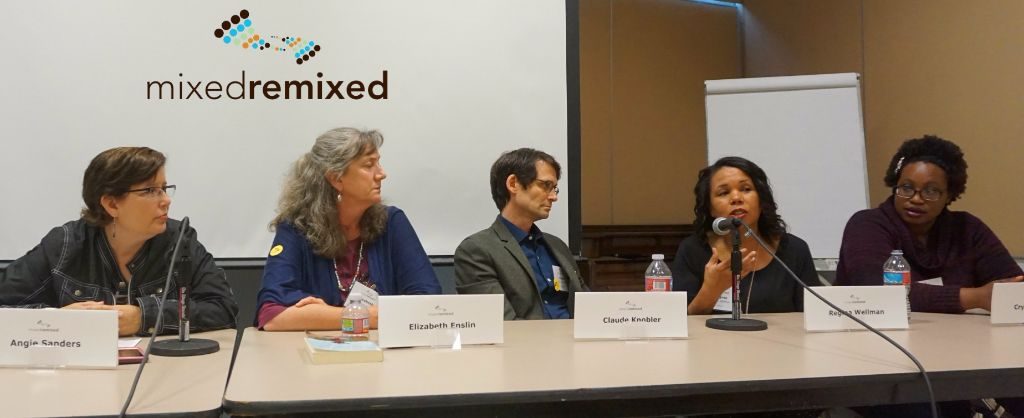 Finding one’s biological parents and the desire to seek out one’s biological identity are natural yearnings in adopted children. (“Do you know who your real parent are?” is to the adopted child is like “What are you?” to us mixed race folk). Ms. Sander’s approach to this issues was always to “keep an open dialog.” Share what you know and teach your child to think critically about what’s around him or her.
Finding one’s biological parents and the desire to seek out one’s biological identity are natural yearnings in adopted children. (“Do you know who your real parent are?” is to the adopted child is like “What are you?” to us mixed race folk). Ms. Sander’s approach to this issues was always to “keep an open dialog.” Share what you know and teach your child to think critically about what’s around him or her.
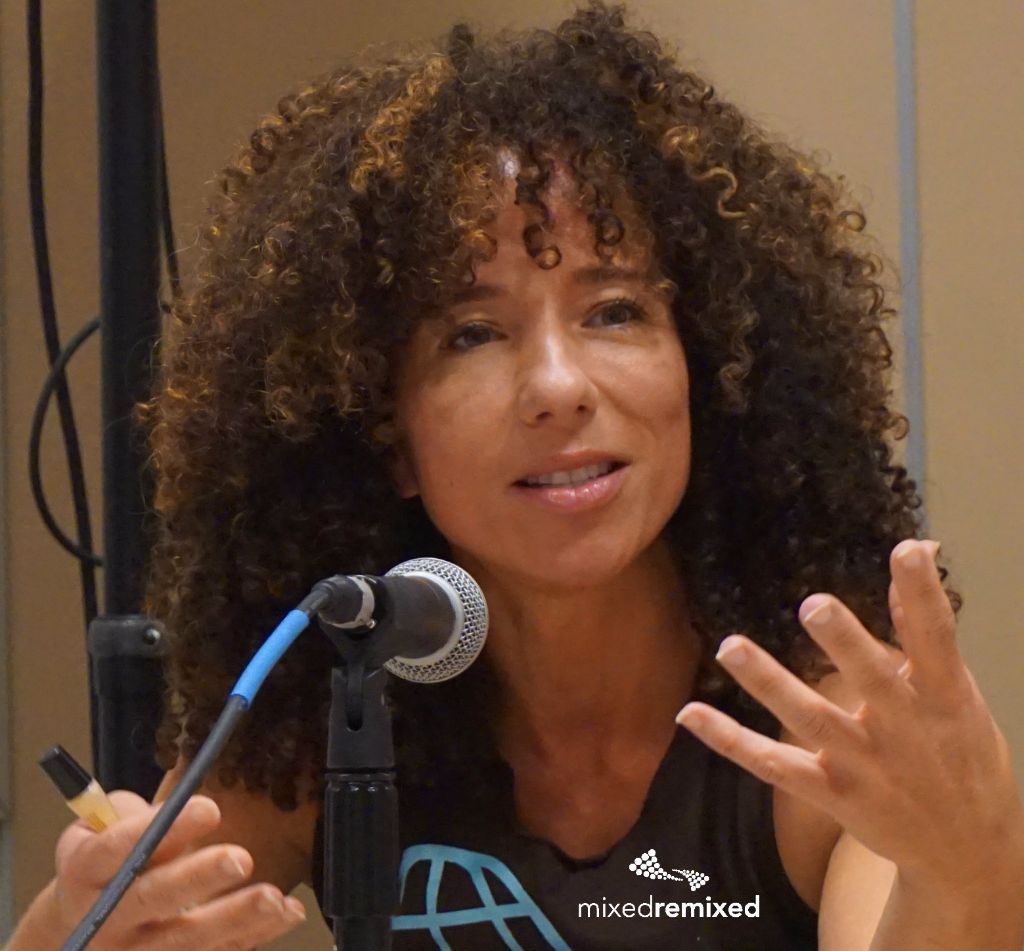 An important point to remember is that no parent can give their children everything. Referring to one of their trips to Africa with Nati, Mary Knobler, Claude’s wife, who was in the audience for the panel discussion, described how upon visiting Ethiopia Nati experienced what it’s like to be in the majority, and how that experience is just not something that they, as white parents living in the United States, can give Nati in his day-to-day life. “We can’t give him everything. We do the best we can with what we have.” As a mixed race father of a biological son and a daughter adopted from overseas, to that sentiment I emphatically relate.-Michael Maliner, Festival Blogger Twitter @plasticspoon
An important point to remember is that no parent can give their children everything. Referring to one of their trips to Africa with Nati, Mary Knobler, Claude’s wife, who was in the audience for the panel discussion, described how upon visiting Ethiopia Nati experienced what it’s like to be in the majority, and how that experience is just not something that they, as white parents living in the United States, can give Nati in his day-to-day life. “We can’t give him everything. We do the best we can with what we have.” As a mixed race father of a biological son and a daughter adopted from overseas, to that sentiment I emphatically relate.-Michael Maliner, Festival Blogger Twitter @plasticspoon
This is one story in a series about the programs held at the Mixed Remixed Festival 2016. Please read through them all by searching our blog with “2016 Festival Re-Cap.”
stristr(): Argument #1 ($haystack) must be of type string, array given